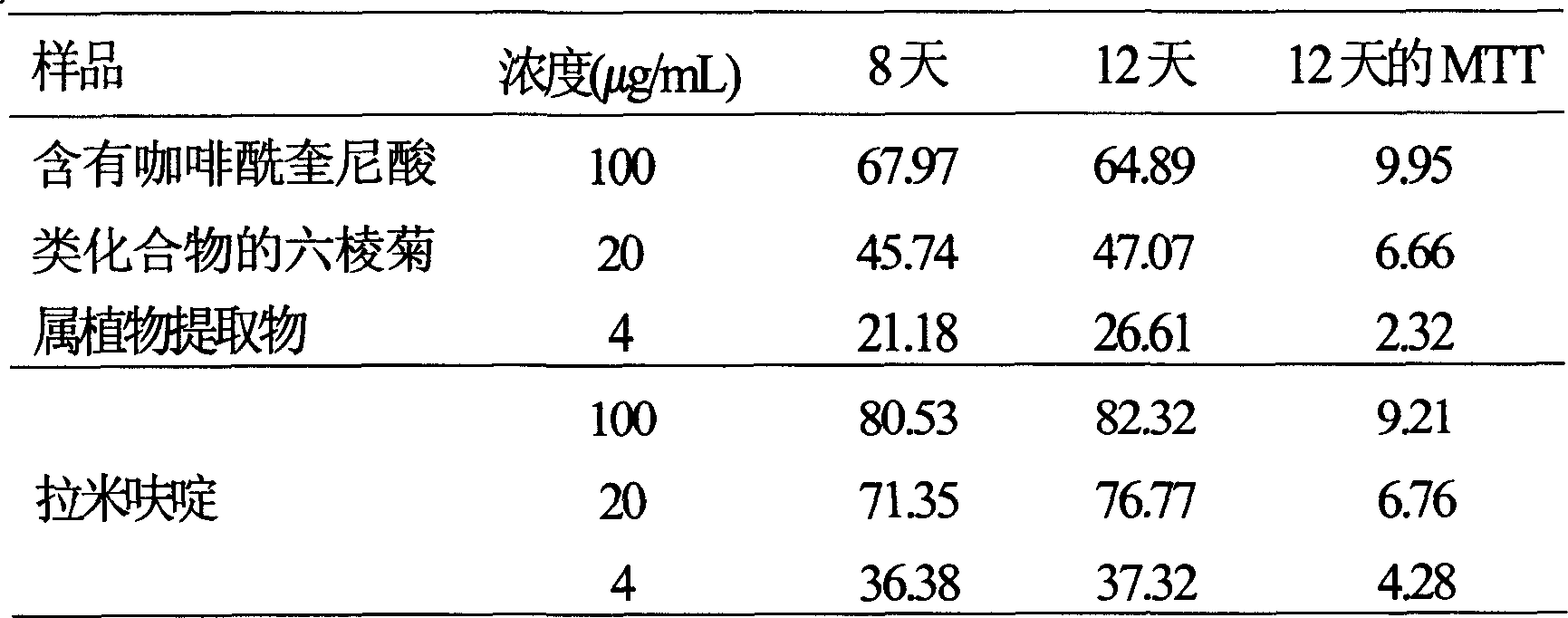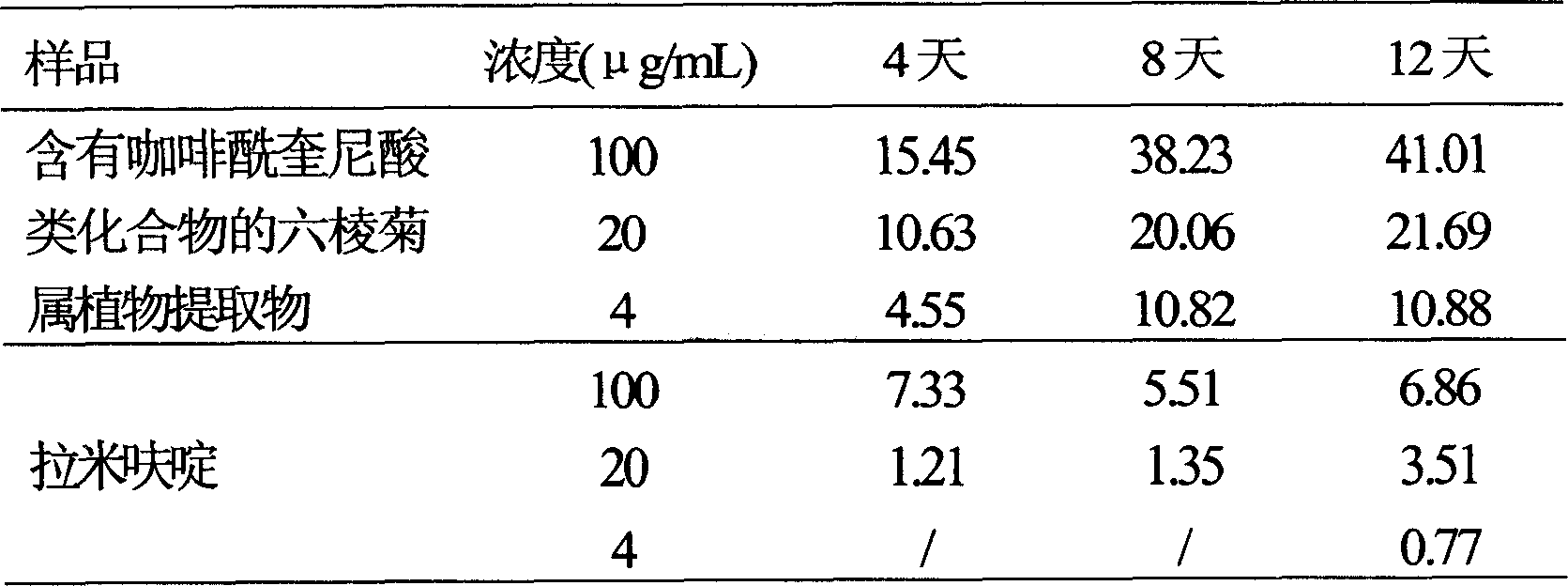Use of laggera plant abstract in inhibiting herpes simplex virus and hepatitis B virus
A technology of plant extracts and hepatitis B virus, applied in the field of medicine, can solve problems such as drug resistance, high price, and adverse effects
- Summary
- Abstract
- Description
- Claims
- Application Information
AI Technical Summary
Problems solved by technology
Method used
Image
Examples
Embodiment 1
[0015]Example 1 : Inhibition of HSV-1 by extracts of plants of the genus Hexaphyllum containing caffeoylquinic acid compounds:
[0016] 1.1 Cell culture and virus subculture: Culture Vero cells in RPMI1640 medium containing 10% inactivated calf serum, 100U / ml penicillin and 100μg / mL at 37°C, 5% CO 2 , cultured in an incubator with 100% relative humidity. Add HSV-1 to the long-lived Vero cell flask, set at 37°C, 5% CO 2 , cultivated in an incubator with 100% relative humidity, collected the culture supernatant, and stored it at low temperature.
[0017] 1.2 Experimental method:
[0018] MTT method was used to measure the inhibitory effect of the plant extract of Hexagonal genus containing caffeoylquinic acid compounds on the growth of Vero cells: the Vero cells in the logarithmic growth phase were taken, and the cells were diluted to 1 × 10 with medium. 5 / mL, seeded in 96-well cell culture plate, 100 μL per well, at 37°C, 5% CO 2 After culturing in an incubator with 100% r...
Embodiment 2
[0025] Example 2: Inhibition test of HSV-2 by extracts of plants of the genus Hexaphyllum containing caffeoylquinic acid compounds:
[0026] 2.1 Cell culture and virus passage: Same as Example 1.
[0027] 2.2 Experimental method:
[0028] Adopt MTT method, calculate the half maximal inhibitory concentration (TD) to cell growth with the method of embodiment one 50 ), the inhibitory effect on virus growth (IC 50 ), and the sample therapeutic index (TI).
[0029] 2.3 Experimental results: the results are shown in Table 1, the plant extracts of the genus Hexaphyllum containing caffeoylquinic acid compounds can significantly inhibit the replication of HSV-2. Its half inhibitory concentration to HSV-2 is 90.05 μg / mL, and its therapeutic index is 11.10.
Embodiment 3
[0030] Example 3: Inhibition test of Hepatitis B virus deoxyribonucleic acid (HBVDNA) containing caffeoyl quinic acid compounds of the plant extracts of the genus Hepatitis:
[0031] 3.1 Instruments and reagents: PE7700 automatic fluorescent PCR instrument, produced by Perkin Elmer Company of the United States; HBVDNA fluorescence quantitative detection kit was provided by Da’an Gene Diagnostic Center of Sun Yat-sen Medical University; fetal bovine serum, DMEM, G418, and trypsin were all purchased from Gibco Company.
[0032] 3.2 In vitro cell model: HepG 2.2.15 cell line was provided by Zhejiang University Traditional Chinese Medicine and Natural Medicine Laboratory. HepG2.2.15 cells were inoculated in DMEM culture medium (containing 10% fetal bovine serum, 380ug / mLG418) and placed in 5% Cultured in CO2 37°C incubator.
[0033] 3.3 Drug effect: HepG 2.2.15 cells were digested with trypsin digestion solution and diluted to 8×10 4 / mL suspension, inoculated in a 96-well cell...
PUM
 Login to View More
Login to View More Abstract
Description
Claims
Application Information
 Login to View More
Login to View More - R&D
- Intellectual Property
- Life Sciences
- Materials
- Tech Scout
- Unparalleled Data Quality
- Higher Quality Content
- 60% Fewer Hallucinations
Browse by: Latest US Patents, China's latest patents, Technical Efficacy Thesaurus, Application Domain, Technology Topic, Popular Technical Reports.
© 2025 PatSnap. All rights reserved.Legal|Privacy policy|Modern Slavery Act Transparency Statement|Sitemap|About US| Contact US: help@patsnap.com



